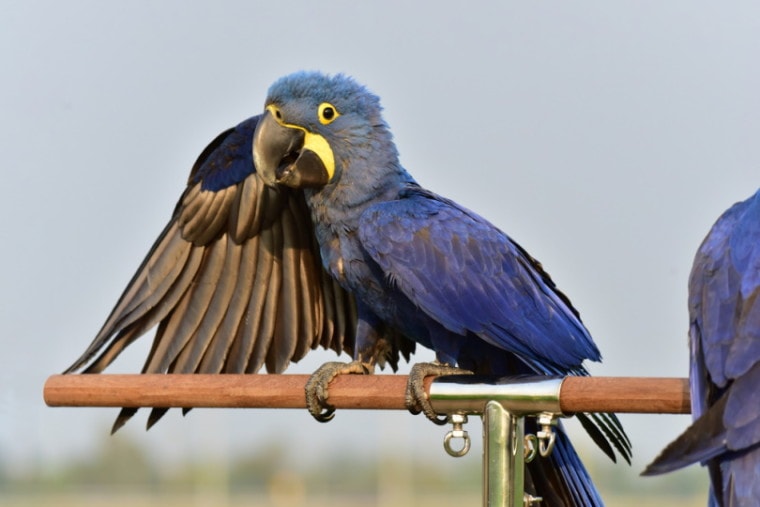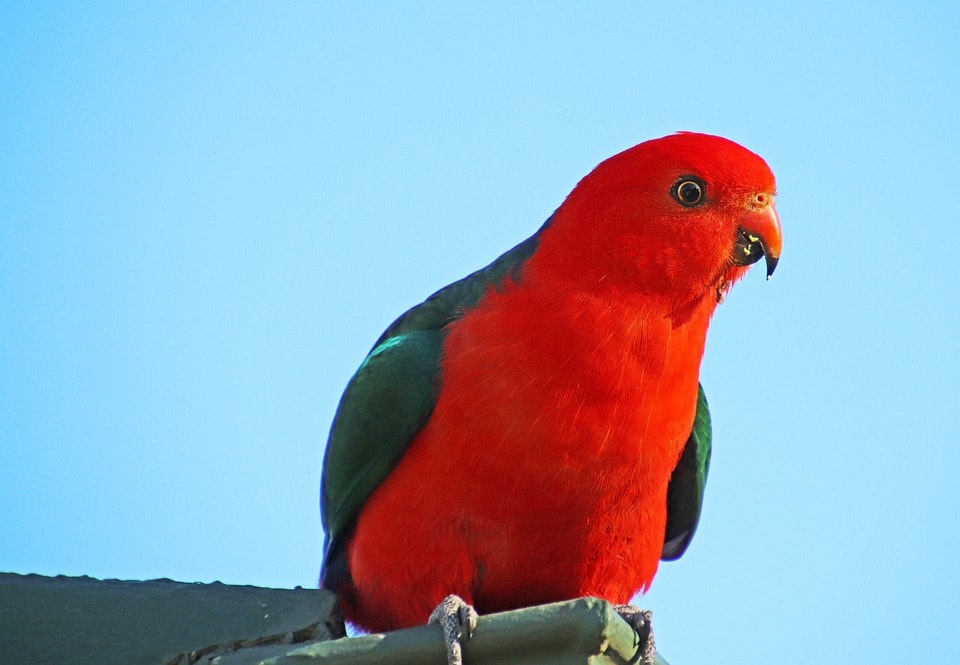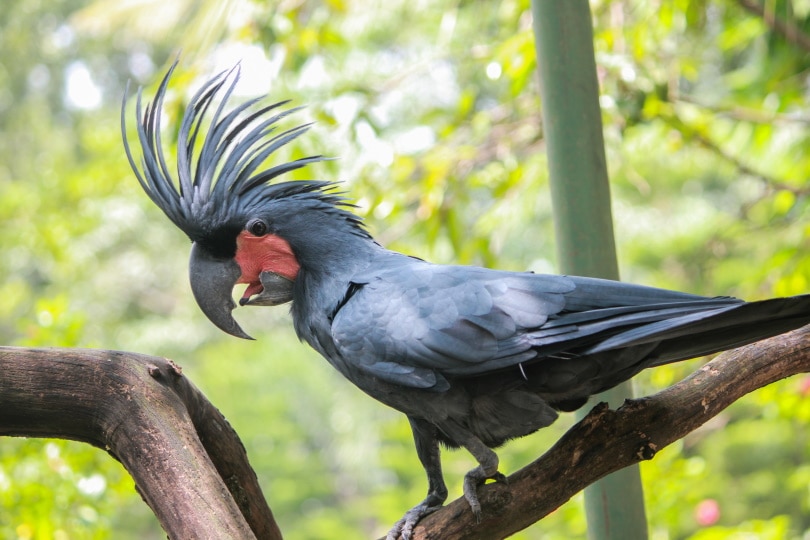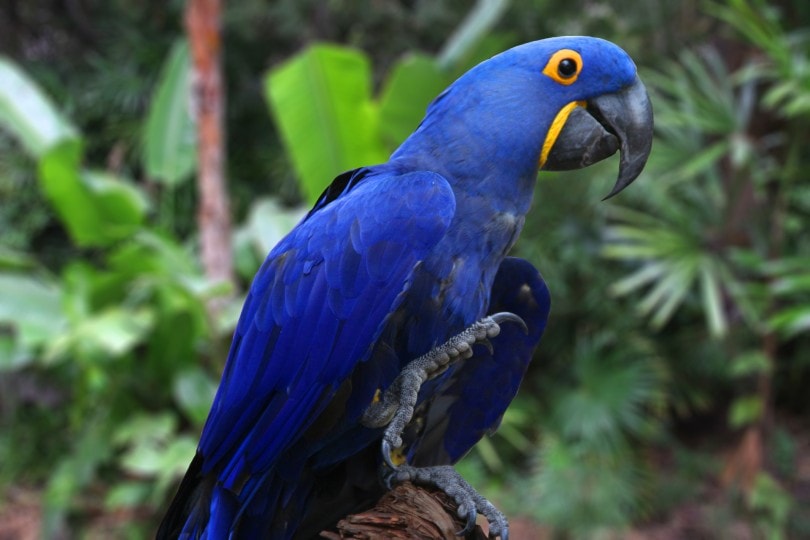
Some people will admire an animal and decide that they want to keep it as a pet. Of course, this is usually not an ideal situation for the animal. This happens frequently with birds. Since they are beautiful and fascinating, they are often trapped in order to be sold in the exotic pet trade.
This causes problems for the species itself, but it also disrupts its ecosystem. It is estimated that only one in every six parrots captured in the wild for the pet trade survive the process. The same is true for many other species.
Fortunately, many people are working to properly breed and protect endangered species of birds. They may release them back into the wild to restore decimated populations or help introduce them to new environments where they can thrive.
If you’re interested in learning more about the bird species that are rare as pets, including those that can be helped by being bred and reintroduced to the wild, read on.
Top 7 Rare Pet Birds
1. Archangel Pigeon

| Size: | 10 to 11 inches |
| Habitat: | Throughout Europe |
| Temperament | Calm, docile |
The archangel pigeon has been selectively bred to produce its unusual coloring. It has a bronze or gold body with a metallic sheen to the feathers. Its wings are black, white, or blue, and it has bright orange eyes. This breed has specifically been bred as a domestic bird and can’t survive in the wild. It’s primarily used in shows and as an ornamental pet bird.
2. Australian King Parrot

| Size: | 16 to 18 inches |
| Habitat: | Eastern Australia |
| Temperament | Intelligent, vocal |
The Australian king parrot is kept as a pet because of its look, not because it is affectionate or likes handling. Males are bright red with green wings and black tails. Females look quite different. They are green with red bellies and legs. One problem with keeping them as pets is that they need a large space in which to roam around. They aren’t happy with small cages and need handlers who know how to give them the space they need.
3. Black Palm Cockatoo

| Size: | 22 to 24 inches |
| Habitat: | Australia |
| Temperament | Territorial, intelligent, social |
The black palm cockatoo is one of the largest species of cockatoo. It’s dark grey to black with maroon cheeks. It also has a feathered crest on its head that looks like palm fronds, giving it its name. Black palm cockatoos that are kept as pets are described as being very needy. They are social and intelligent and will grow depressed and destructive if they don’t receive the care and interaction they need. Although they were once common, they are now considered vulnerable in the wild. Habitat destruction and capture for the pet trade have led to a sharp decrease in their numbers.
4. Golden Conure

| Size: | 12 to 13 inches |
| Habitat: | Brazil |
| Temperament | Active, curious, vocal |
The golden conure is bright yellow with just a touch of green at the tips of its wing feathers. It has a white ring around its eyes, a tan beak, and pinkish legs. This species of conure is endangered due to heavy deforestation in its natural habitat and capture for the pet trade. It’s very difficult to purchase one of these birds from a breeder, as their sale is heavily regulated.
5. Green Aracari

| Size: | 12 to 16 inches |
| Habitat: | Brazil, Venezuela, French Guiana, Guyana, and Suriname |
| Temperament | Social, affectionate, energetic |
The green aracari is a toucan. It has very dark green, almost black, feathers on its back and tail. The chest is light green or yellow and the head is burgundy. Its beak is tri-colored in yellow, burgundy, and black. These large birds are very active and in the wild, spend time in small groups that forage for food together. As pets, they require very large cages and a lot of attention.
6. Hyacinth Macaw

| Size: | 40 inches |
| Habitat: | Brazil, Paraguay, Bolivia |
| Temperament | Gentle, intelligent, noisy |
The hyacinth macaw is the largest of all parrot species. It’s bright blue, and there is a yellow ring around its eyes and on its chin. These are endangered, rare birds and really shouldn’t be kept as pets. Their large size means they need a lot of space. They also have very specific dietary needs. In the wild, these birds eat nuts only from two types of palm trees. While they can eat other kinds of nuts, it’s not the same as their natural diet. Furthermore, these birds are not solitary creatures. They live in pairs in the wild and will become depressed and destructive if they don’t have company in captivity.
- Related Read: How Much Does a Hyacinth Macaw Cost? Price Guide
7. Victoria Crowned Pigeon

| Size: | 29 to 31 inches |
| Habitat: | New Guinea |
| Temperament | Intelligent, docile |
The Victoria crowned pigeon was named to honor Queen Victoria. These majestic birds have a plume of lacey blue feathers on their heads. They are very large and can weigh up to 7 pounds. The feathers on their bodies are light blue with maroon on the chest. They are the largest species of pigeon in the world. They spend most of their time on the ground and need a significant amount of space to run around. They also need places to perch. It’s highly unlikely they can find what they need in your home, so they are best left to zoos where they can be properly cared for.
Final Thoughts
While it can be tempting to own a beautiful and rare bird, it’s often not in the animal’s best interest. Many bird owners underestimate the amount of space and attention that birds need. Instead of keeping wild birds as pets, it’s better to go see them in zoos and wildlife sanctuaries where they are properly cared for by expert handlers.
See Also:
Featured Image Credit: Sanit Fuangnakhon, Shutterstock








